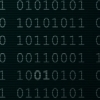Here's my OnResize() function. I'm either doing something wrong, or ResizeBuffers doesn't do what I though it did. Sorry if this is a dumb question
[source lang="cpp"]HRESULT OnResize(LPARAM lParam)
{
g_pImmediateContext->OMSetRenderTargets(0, 0, 0);
// Release any extraneous instances of swap chain's buffers. The render
// target view typically holds references to swap chain's buffers.
g_pRenderTargetView->Release();
UINT width = LOWORD(lParam);
UINT height = HIWORD(lParam);
// Resize swap chain's buffers.
HRESULT hr = g_pSwapChain->ResizeBuffers(1, width, height, DXGI_FORMAT_R8G8B8A8_UNORM, 0);
if(FAILED(hr))
{
MessageBox(NULL, "[ERROR] Failed to resize buffers.\nOnResize() in rederer.cpp",
"ERROR", MB_ICONERROR | MB_OK);
return hr;
}
// Get buffer and create render target view.
ID3D11Texture2D* pBackBuffer = nullptr;
hr = g_pSwapChain->GetBuffer(0, __uuidof(ID3D11Texture2D), (void**)&pBackBuffer);
if(FAILED(hr))
{
MessageBox(NULL, "[ERROR] Failed to get back buffer.\nOnResize() in renderer.cpp",
"ERROR", MB_ICONERROR | MB_OK);
return hr;
}
hr = g_pD3DDevice->CreateRenderTargetView(pBackBuffer, NULL, &g_pRenderTargetView);
pBackBuffer->Release();
if(FAILED(hr))
{
MessageBox(NULL, "[ERROR] Failed to create render target view."
"\nOnResize() in renderer.cpp", "ERROR", MB_ICONERROR | MB_OK);
return hr;
}
g_pImmediateContext->OMSetRenderTargets(1, &g_pRenderTargetView, NULL);
// Set up viewport.
D3D11_VIEWPORT vp;
vp.Width = (float)width;
vp.Height = (float)height;
vp.MinDepth = 0.0f;
vp.MaxDepth = 1.0f;
vp.TopLeftX = 0;
vp.TopLeftY = 0;
g_pImmediateContext->RSSetViewports(1, &vp);
return S_OK;
}[/source]
And here's the little snippet inside of WndProc() where I call it.
[source lang="cpp"]case WM_SIZE:
if(g_pSwapChain)
{
OnResize(lParam);
}
return 0;[/source]
Thanks for the help.




